Eurail Passes are famous as a way to save money while exploring Europe, but they are also confusing and often misunderstood. They are still an amazing money-saving tool for certain types of travelers, and not a wise idea for most others. Before Europe introduced dynamic rail pricing (like airfares, where the price varies depending on when you buy it), a Eurail Pass was an easy way to save money since all tickets had fixed prices that were generally fairly expensive. These days most travelers can save far more money just by buying their train tickets at least a few weeks in advance.
That said, Eurail Passes are still great for longer trips and especially for people who like to make plans as they go. Dynamic rail pricing made advanced tickets much cheaper, but it also made last-minute tickets MUCH more expensive. Below we will discuss Eurail Passes and whether they are a good idea for your trip or not.
Disclosure: This is a reader-supported website and some of the links are affiliate links where a small commission is paid to help keep this site going.
Note: This article was written in 2012 and has been continuously updated since then, so all information is current as of April, 2024.
Eurail 2024 changes: New countries and a mobile version
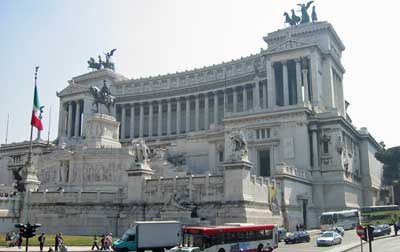
Aside from that it’s just the normal fact that they have updated the timetables as of December 2023 and have a few promotions going on, but those usually don’t happen over the busy summer season.
Eurail passes are now available in a mobile version
Until very recently, Eurail Passes were only available in paper form and they were quite confusing at first. You’d get a pass with a series of empty boxes on it and you’d need to enter your trip before you’d use your pass each day and then have the first conductor verify it. If you lost your ticket (and this was not uncommon), it was a whole ordeal to attempt to get a replacement.
Again in 2024 Eurail offers a fully mobile version that is delivered instantly to your mobile device with no delivery fee. And if you somehow lose your phone, you can resume using your Pass on your replacement with no extra headache. This is MUCH more convenient in every way and as long as you can keep track of your phone you’ll always have your train pass handy.
If your trip will be 2 weeks or less, a Eurail Pass probably won't be worth it

Eurail Passes are ideal for travelers on longer trips, and especially those who don’t want to plan all of their destinations and dates far in advance. If you have your itinerary pretty much planned out and you don’t require much flexibility, you’ll be far better off just locking in your dates and buying your train tickets as early as you can. Again, they can be surprisingly cheap if you buy 2 to 4 months out.
If you are age 27 or younger, a Eurail Pass is probably worth it

With this in mind, if you are lucky enough to still be 27 or younger, you should seriously think about getting a Eurail Global Pass Youth, partly because the sense of freedom instantly gets more expensive at age 28. The age cutoff was 25 until recently, so this change is a great deal for anyone who will be 26 or 27 at the start of their trip.
You aren’t guaranteed to save money by buying a Youth Eurail Pass, but chances are good that you WILL save money and you’ll definitely save a lot of hassle as well. Especially now that Eurail Passes come in a mobile form, it’s even that much more convenient to just hop aboard any train that is about to leave the station and not worry about buying or even having a ticket. Especially for young people, it can be really fun and exhilarating to literally just walk into a train station with your backpack and look at the departure board and then decide where to go at that moment.
If you are age 60 or over, a Eurail Pass could also be great value
Another fairly recent change is that anyone who is 60 years or older at the start of the use of a Eurail Pass now gets 10% off the normal adult fare. That new discount is going to make this a great value for many travelers who might have been on the fence about buying a full-price pass before.
>>>Check prices on Eurail Passes
If you are planning on traveling in 1st Class anyway, a Eurail Pass is probably worth it
Most 2nd Class trains provide similar comfort and legroom to Business Class airline seats, or at least close enough, so for most people it’s not worth the added expense for 1st Class. However, if you are rich or elderly or fear contact with strangers, a 1st Class Eurail Pass is probably worth it no matter what.
Not only do you get much more comfort and legroom in 1st Class, with only 3 seats across instead of 4, but there is another advantage to 1st Class on European trains. Since it’s mostly business travelers and wealthy people traveling in 1st Class, the carriages are almost always mostly empty except in the mornings and late afternoons between large cities. In 2nd Class the only available seats might be two seats in an 8-seat cabin with all the other seats taken up by a loud family or a group of rowdy friends. In 1st Class you are all but guaranteed a peaceful ride, and usually plenty of empty seats from which to choose.
A hidden Eurail Pass benefit: Making extra stops on travel days for free
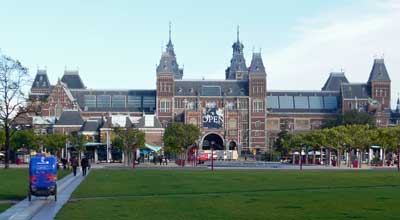
Brussels in particular is one I recommend a short stop in because the small historic center around what they called the Grand Place is amazing and gorgeous, while the rest of the city is rather boring by European standards. With a Eurail Pass you can jump off the train in Brussels and explore the city center for a few hours (luggage storage is cheap and easy) and maybe have lunch, and then hop on a later train to complete your journey to Amsterdam. There are opportunities like this on many if not most trips between larger cities, and if you buy the point-to-point tickets you have to stay on the train you booked.
Another example is the high-speed train between Barcelona and Madrid, which takes about 2.5 to 3 hours in each direction. There are some interesting cities in between, but in this case you could take a morning train from Barcelona to Madrid and then check into your accommodation, and then hop on another train from Madrid to Toledo, which takes about 30 minutes and costs €14 each way. Toledo is a historic and fascinating town, but it’s also pretty small and you can explore the main sights in an afternoon. With a Flexi Eurail Pass where you buy a certain number of travel days, you can save more money by adding on these sorts of nearby stops on travel days.
If you'll be touring major cities within ONE country, a single-country pass might be perfect, and Second Class passes are available for all ages
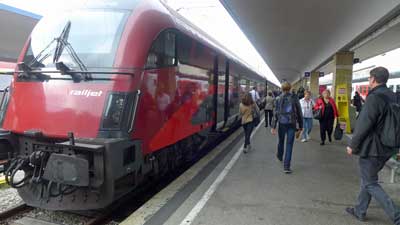
Single-country passes are still available and they MIGHT be good value for you, but it depends on which country and how much traveling you’ll be doing. If you plan on going all over a larger country such as Germany, France, or Spain, and especially if you like to make plans as you go, a Single-country pass for one of those might be your best deal. On the other hand, smaller countries (such as the Netherlands) or countries where train tickets are already fairly cheap (such as Italy) might be harder to get value out of. Long story short, for single-country passes you really need to check fares of the places you plan on going and see how they add up compared to the pass.
>>>Check prices for Single Country Passes
Eurostar (between London and Paris or Brussels or Amsterdam) tickets are now included for Eurail Pass holders for a €30 reservation fee
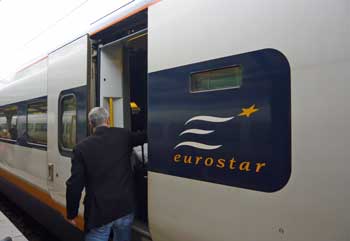
Our recent tests show that Eurostar fares one-way from London to Paris can be as low as €49 if you book about 3 months out, or as expensive as €214 for the same seat if you wait until the day of travel to buy. Round-trip/return tickets can be even cheaper if there is a promotion running.
>>>Check Eurostar prices
If you are on a really low budget, a Eurail Pass isn't a good idea
Here’s the thing. As we’ll discuss below, there are many potential benefits to Eurail Passes, and they will often save you money, but they do cost a lot and they only really save you money when traveling in the more expensive countries.
So let’s say you have a flight to Rome and then US$2,000 to last you a month after you arrive. Buying a Eurail Pass before you go would help you see a lot in that month, but you’d practically need to sleep in parks for your funds to last the whole time. You’d be better off moving slowly in the southern countries, or just in Italy itself, as a way to have the best holiday on your budget. You might also be tempted to use a Eurail Pass mostly on night trains so you can save the cost of a hotel or hostel, but those aren’t ideal for most of us.
The cheapest way to get around Europe by rail is to buy all train tickets online at least a couple months in advance. The fares are low, but they are non-refundable and non-changeable. See how far in advance you should buy train tickets to get those attractive fares.
If more than a little of your travel will be in eastern Europe, a Eurail Pass isn't a good idea
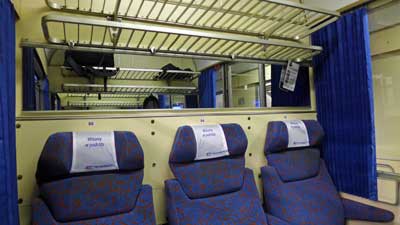
The good news is that the trains operating in this region, and the buses that operate alongside and/or where trains aren’t running, are quite cheap. So if any significant part of your trip will be into this region, a rail pass doesn’t make sense.
Basic types of Eurail Passes
Long gone are the days of the simple options, replaced by specialized passes that are meant to appeal to different styles. It should be pretty easy to figure out which is best for you, and then keep going down the page to decide if it’s worth it at all.
Eurail Global Pass – 4,5, or 7 days within 1 month or 10 days within 2 months
Until recently the minimum number of travel days with 10 days within 2 months, but now you can buy as few as 4 days within 1 month for about €200 to €250 (for first class). This can actually be an interesting strategy if you are planning many shorter and cheaper trips (like within Italy or Eastern Europe), and also 4 or 5 longer trips such as Berlin to Amsterdam. This way you can buy only 4 or 5 travel days and only use them for your most expensive travel days, and just pay as you go or buy cheap advance tickets for your other journeys.
Eurail Global Pass – 15 to 90 consecutive days
This variation allows for unlimited travel on the system for between 15 and 90 total days. They are really only a good idea for people who are certain they are going to travel very often, with much of it being in the north of Europe. The problem with them is that if you really try to get your money’s worth, you will probably ruin your trip by spending too much time on trains in general. On the other hand, if you will be in Europe for 2 or 3 months and plan on traveling around a lot, you can get a LOT of use out of a longer pass. The 3-month pass is around €900 so it’s literally about €10 per day. Imagine going back and forth between Berlin and Munich or Barcelona and Madrid for €10 per day!
One Country Pass
Obviously these are for travel within one country only. Again, they can be great deals if you plan on extensively moving around one particular country.
Where to buy your Eurail Pass
Eurail Passes are cheapest and easiest to buy online, primarily from two main sources which offer all the same products at the exact same prices:
This is a reliable company based in the Netherlands but with fulfillment offices in the US and Ireland. Price of Travel is a partner with this company, and if you use the links of this site we earn a small commission to help keep this site online. Eurail.com is usually cheaper than RailEurope (discussed below) by the way.
They were founded in the 1930s and are based in New York, but owned primarily by the French and Swiss rail companies. They offer free shipping (2 to 3 business days) on all orders of US$399 or more, although now that a mobile version is available, this is meaningless. Price of Travel is a partner with this company, and if you use the links of this site we earn a small commission to help keep this site online.
Reservations on European trains for rail pass holders
For most of the fastest trains between major cities you’ll need to reserve a seat even with a rail pass. It can usually be done just before you leave and the cost is usually around €5. Here’s a full list of which European trains require reservations and which don’t.
Reservations are required on all intercity (longer distance) trains in or involving France, Spain, Switzerland, and Italy. For most trains in Germany, Austria, Netherlands, Belgium, and most of eastern Europe, you can usually find trains that don’t require seat reservations. Often, if you don’t leave until after 9:30am or so, you can ride on any train with no seat reservation, but you have to research each leg to be sure.
How to determine which trains require seat reservations, and also get schedules
You can click on the link just above this section for a list of countries and their seat-reservation policies, but in some cases it’s actually a bit more complicated than that. For example, you can generally ride without a seat reservation on fast ICE (Inter City Express) trains in Germany if you depart after 09:30 in the morning. They do this to free up seats for business travelers who pay full fare, and they don’t mind filling up seats with rail pass holders on trains leaving a bit later.
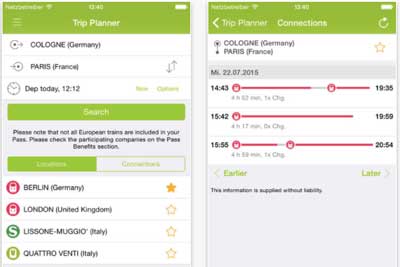
Night trains in Europe are making a comeback
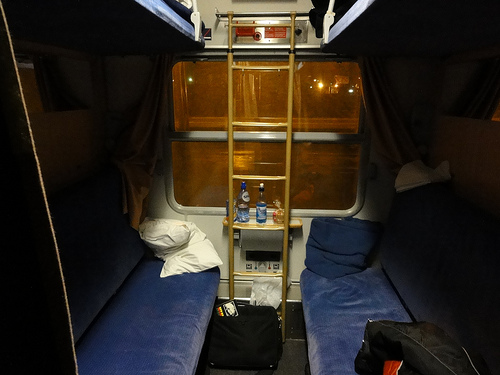
Fast forward to 2024 and night trains are not only expanding service, but they are very trendy. Some of it is nostalgia for the older way of getting around, but most of it is for environmental purposes combined with European hatred for the “low cost airline” experience with RyanAir and Easy Jet etc.
Personally I’m still not a fan of night trains because I find it difficult to sleep on them since they often get decoupled at interim stations in the middle of the night and then coupled onto other trains coming from other places, and I can’t sleep through any of that. But still, they are worth looking into and they are fun to try at least once.
A bit of warning that they tend not to be cheap and even if you have a Eurail Pass you’ll almost certainly want to book a sleeping cabin with a bunk or couchette, and that will come at an extra fee. On the other hand, if you are the sort of person who can sleep sitting upright in a normal seat, then that won’t cost any extra on most overnight trains.
Factors to consider when thinking about any Eurail Pass
Assuming you know which Eurail Saver Pass option is the best one for your type of trip by now, we’ll go over the main factors that should help you decide whether it’s the best idea for you.
Eurail Passes are best for standard ‘medium length’ journeys
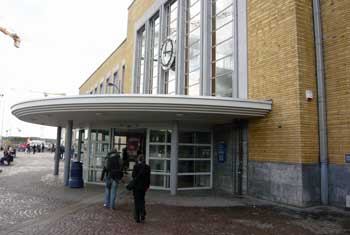
However, if you are determined to travel between Rome and Paris, it’s about a 14-hour journey that will almost certainly be overnight. In this case, a cheap plane ticket is probably better, although taking shorter hops on the train is even better, so spend a day or two in Milan or Lyon on the way instead.
And of course, if you prefer to stop in various small towns between the big ones, then a Eurail Pass won’t pay off, except for the traditional kind for unlimited travel in a given period.
Eurail Passes are better value in northern Europe, France, and Spain, and poor value in Italy
Once you do a bit of research you’ll quickly learn that train tickets (and almost everything else) are much more expensive in Germany, Netherlands, Denmark, Sweden, Norway, and Finland than they are in Greece, Italy, Portugal, and Spain. With this in mind, the regional passes can make sense if you are spending time in the south, but the Global Passes almost certainly won’t. Train tickets in Spain used to be fairly cheap, but in recent years they’ve added new high-speed trains between the major cities, and these are quite expensive.
Unlike most other countries, Italy really subsidizes its train tickets so they are quite reasonable even on travel day, and very cheap if you buy a month or more in advance. For example, you can go between Rome and Florence for around €49 if you buy on travel day, and as little as €19 if you buy well in advance. In most other countries, fares are double or triple that much for similar rides.
So consider your planned itinerary. If more than half of it is in the Mediterranean countries then look into a Regional Pass or just buy tickets as you go, because they tend to be pretty cheap. But if you are planning on spending at least half your time in Paris and places to the north of it, then a Eurail Pass is probably a money saver because those tickets are expensive.
Trains are almost always better than planes
Flying sucks, even in Europe
Until you’ve experienced the joy of traveling around Europe by train you might be tempted to “maximize” your time by flying low-cost airlines between each city. This would be a mistake. In order to get truly cheap airfares you have to purchase long in advance, buying non-refundable tickets. You might also have to commit to flights in the very early morning or in the late evening, because cheap tickets on convenient flights sell out quickly.
And again, most European airports are around an hour outside of the city. They are often on the main train lines, which helps, but still you have to deal with the madness of security and also try to get there at least two hours early. From one city center to any other city center it’s about 5 hours minimum, even if they are close, and those are pretty miserable hours.
Train travel is a positive experience

Not only are all the seats comfortable on trains, but you also have an interesting view most of the time. Better still, trains deposit you in the heart of every city, which is usually the neighborhood with the cheapest hotels and food. It’s a wonderful feeling to step off a relaxing train ride, buy a hot dog or sandwich at a local shop, and then be in your hotel room only about 10 minutes later.
Eurail Passes are better than train tickets alone
As someone who enjoys the process of crunching numbers and looking for value, I have to also mention that I’d buy a Eurail Pass even if it seemed like it would cost a bit more than the individual tickets. With a pass you get an extra element of freedom that is worth a lot more than you might expect until you’ve used one.
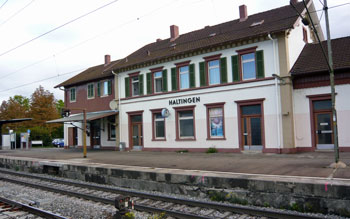
Let’s say you are heading from Amsterdam to Hamburg tomorrow morning. The 09:00 train you planned for might seem a bit ambitious after a long night out, so you can instead opt for the 10:00 or 11:00 train. As long as you walk into Centraal Station 10 or so minutes before departure, you are on. If you are flying you can’t change your ticket, and if you are buying train tickets as you go you have to be in line at the international desk at the train station at least 30 minutes early, and even then you might miss it if they are busy.
Freedom and getting to feel like a big shot
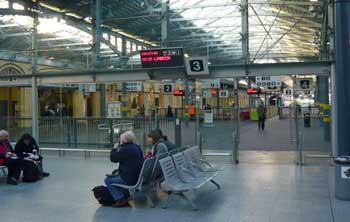
Let’s say you are staying at a hostel in Brussels, and two groups of new friends suggest that you go along with them to their next stops. One group is going to Bruges, which is a short and cheap journey, so you can join them by buying individual tickets (unless you have the unlimited pass, making it free). Then you restart your trip from Bruges, on to your next destination. The other group is headed to Berlin on a night train, which is long and expensive, but with a Eurail Pass you don’t even have to think about the cost. On you go, just like a rich person.
Buying a Eurail Pass is great for those who might run out of money
We all know people who keep meticulous track of every penny they spend, and who are always putting money away for a rainy day. And we all know people who can take a US$100 “entertainment fund” and burn through almost all of it in just a few hours. For the first type of person, a Eurail Pass can help you keep track of expenses, but it’s really the second type of person these are best for.
It’s sad to hear about people who have big plans to see their dream destinations, but they run out of money for transportation halfway into the trip, so they have to just stay put until they fly home. It happens. Locking in your major transportation costs before you leave home, and probably saving money in the process, is a wise move for anyone who isn’t as disciplined as they’d like with their money.
>>>Check prices on Eurail Passes
Bottom line: If you want to keep travel costs down, your choices will usually be a Eurail Pass or buying tickets at least a month or more early
In the last few years, almost every long-distance train ride in Europe has switched to a pricing system similar to low-cost airlines. In other words, tickets go on sale 2 to 6 months ahead of time at very low prices, and they keep getting more expensive as the train fills up and the date approaches. For most trips where a rail pass is possible, this is how things stack up:
Cheapest possible way: Buy advanced (non-refundable, non-changeable) train tickets at least 30 days in advance
Next cheapest way: Buy a Eurail Pass and make seat reservations as you go, usually only a day or less in advance.
Most expensive way: Buy train tickets as you go, or less than a week in advance.
Thinking about it this way should make the choice a bit easier. If you are the type who likes to plan each day and travel segment long before you even leave home, then buy tickets online for the best prices. This can be the best strategy for most shorter trips (10 days or less) because you simply don’t have enough time to change many things as you go anyway.
Buying a Eurail Pass won’t be quite as cheap, but you are buying a LOT of flexibility with the extra money. If you dream of making up your plans as you go, or even making up your plans just a few days in advance, this is almost always your best bet.
But if you wait too long, and just show up looking to buy train tickets as you go, they are going to cost a fortune. As recently as only a few years ago all seats would be the same price on many rail systems, so you could always just wing it. When each country computerized its rail systems so they can sell advanced tickets cheaper, they also had to keep track of seat reservations, so the whole pricing structure had changed to favor advanced ticket buyers and rail pass holders over those who’d prefer to just hop on any train as it is leaving the station.
Have a rail pass or itinerary question of your own?
It wasn’t planned but scores of people began asking me rail pass and itinerary questions at the bottom of this article and a few others. I’m happy to keep answering them and now I’m trying to organize them better as well so they are easier for other people to find.
If you have a question about specific types of European rail passes, please ask it in the comments below.
But if you have a question more about a European itinerary or other non-rail-pass questions, please click over to the European itineraries Q & A article and ask in the comments of that one.

Hi Roger,
I will be travelling throughout Europe next Spring (2015) for about 85 days. My itinerary consists of the following cities:
Madrid – Barcelona – Avignon – Nice – Genoa – Cinque Terre – Florence – Lucca – Rome – (flight to) Athens – (flight to) Prague – Krakow – Warsaw – Berlin – Paris – Vimy – Normandy – England [with an average of 3 nights in each city]
I am trying to figure out which would be the most cost efficient option for me to take the train. I would most likely be purchasing my tickets as I go instead of having them all booked in advance.
Would it be best to get a Global Pass or a Select Pass for the first leg of the trip (Spain – Greece)? I am aware that Poland is not included in the Global Pass. Or is it best to just purchase the tickets as you said a day in advance.
Thanks so much,
Audrey
Audrey F.,
You’ve got an interesting combination of train journeys in mind, at least as far as rail passes are concerned. About 6 or 7 of these rides would be quite expensive if you waited until only a day or two before you want to leave to buy them, several could be over €100. But you’ve also got several that would be much closer to €20 or €30 even at the last minute, specifically the ones in Italy. The trips in eastern Europe will probably be more like €50 each at the most, so even a Select Pass is probably overkill in that area.
One way you could do this is to get a Global Pass for, say, 6 or 8 travel days in 2 months, and you can plan on using those days on your most expensive journeys. That at least keeps the per-day cost reasonable, and allows you to more or less move around as you please. For the rest of the journeys you can probably get pretty cheap tickets if you book at least a few days in advance.
As mentioned above, these train tickets typically start off very cheap when they first go on sale 3 or 4 months out, and the fares rise as more and more seats are sold on each train. But they don’t all go up at the same time, so you might find a situation like this: You are booking 2 days out and the trains leaving at 8am, 9am, and 10am are shown at €89 for a 2nd Class seat, but the 11am train is still €59 and the 2pm train is still €44. In a case like this, you can still get a fairly cheap ticket if you are willing to leave later in the day.
So as is so often the case, the absolute cheapest way of doing this trip would be to buy all of your train tickets at least a month or more in advance, and if you place a high value on potentially being spontaneous (as many of us do), then locking in your most expensive rides with a Global Rail pass or even a Select Pass, could give you more freedom at a reasonable price. But if you always wanted to book only a day before you want to leave, it could end up costing a lot and/or you’d have to travel at weird times in order to avoid paying a fortune.
I hope this helps, and feel free to write back if you have more questions. -Roger
Hi Roger,
A friend, my sister and myself (all under 25) are traveling between France, Spain, Italy, Germany, Belgium and the Netherlands and we are trying to figure out the best Eurorail pass to purchase for our buck. We will be visiting at least 2 cities in each country.
1. Is the global pass worth it to cover all trips made? Or is it cheaper to mismatch between Eurorail select pass, internal train systems and flights?
2. If you buy a select pass for 4 countries, is the fee for traveling through a non-included country expensive?
3. Any other insight you could offer would be greatly appreciated!
Zach,
1. Unfortunately it’s difficult to answer this question without seeing more of a proper draft of an itinerary. One major factor is how many longer trips you’d likely take compared to shorter trips. For example, you mention 2 stops in the Netherlands, and you can get from Amsterdam to Rotterdam or Utrecht or The Hague for under €15 so it’s probably not a good use of a rail pass. The same is true in Belgium, with Brussels to Bruges or Antwerp being quite cheap. Fortunately, Belgium and Netherlands are both part of “Benelux” for rail passes, and that only counts as one country in a Select Pass.
On the other hand, Berlin to Munich or Paris to Nice are fairly expensive train rides individually, so if you are planning more of those, it’s probably a good deal. If you are able to type out a basic itinerary (just a list of cities) that looks like about what you have in mind, I can tell you whether it’s a good deal or not with Eurail.
2. If you had a Select Pass (they have to be bordering countries) and wanted to travel through part of a country that isn’t covered, you’d have to pay only the portion of the ticket within those borders. But it would be difficult to buy that portion of a ticket in advance, so it could be expensive if you had to pay the walk-up price for it. So it really depends on how much of which country you’d go through, and how early you’d buy that ticket. Confusing still, I know.
3. At your ages you can obviously buy a Youth Pass, and those can really be a great deal if you are going to cover enough ground with it. One way to think about it would be to assume that you’ll buy a Global Eurail Pass with, say, 10 travel days in 2 months. With that in hand, where could you go to really make it worthwhile? When you’ve already locked in inexpensive transportation, you can think about going great distances to get the most out of your trip. If you come up with 8 to 10 longer (4 to 7 hours each) journeys, then you can also buy the short and cheap ones as you go. In other words, use a travel day from Paris to Amsterdam, and then buy a cheap ticket from Amsterdam to Rotterdam at the station so you don’t burn a travel day. But if you think you’d prefer many short hops instead, a rail pass probably won’t pay for itself.
So once you get your ideal plan more organized, it will be more obvious which way to go, and I’ll be happy to help. -Roger
Roger,
Thank you for your thoughtful response. Here is our rough itinerary for our trip:
Land in Paris 7/4 at 9:10
Paris for 3 nights (to 7/8)
• Early train (8/9am)
7/8 – Bordeaux
• Leave at night? (train)
7/9 – Madrid for 2 nights (to 7/11)
• Leave early to go to Ibiza (fly)
7/11 – Ibiza for 1 night (to 7/12)
• Leave 4pm ish (fly)
7/12 – Barcelona for 3 nights (7/15)
• Train to Nice
7/15 – Nice for 1 night (7/16)
7/16- Flight to Rome (research I’ve done suggests this is the most efficient way)
7/16- Rome for 2 nights. Train late afternoon to Florence 7/18
7/18- Florence for 3 nights leave early for Venice 7/21
7/21-Venice for 2 nights 7/23
7/23-Travel to a city in between Venice and Munich or straight to Munich still undecided and open to suggestions.
7/26 or 7/27 Leave Munich, travel to Frankfurt for a night (7/28) leave late afternoon
7/28- Arrive in Brussels for 1 nights
7/29- Arrive in Amsterdam late afternoon, spend 2 nights 7/31
7/31- Travel to London for 1 night
8/1 Fly Out of Heathrow 6 pm
Obviously we are really rushing at the end and are open to suggestion on if we should cut out a city or our best option. This is going to be our first time in Europe and we wanted to see as much as possible during this trip due to the fact we are unsure the next time we would be able to make a return trip.
Thank you for your time and all your help!
Zach,
Okay, this will be much easier to comment on. If you presented this itinerary to most other so-called travel experts, they’d insist that you cut half of your destinations and slow way down. My own philosophy is that “fast travel” is a valid approach for many people, but only up to a point.
I think it’s helpful to consider that a “travel day” doesn’t really count as a “sightseeing day” and the sightseeing days are what you are really going for. Except for a few nearby cities that are only 2 hours apart or less by train, the travel part tends to take at least 5 or 6 hours, if not more, and that’s usually in the middle of the day. So let’s say you are going from Paris to Bordeaux and you check out of your hotel at 9am to get to the train station for a 10am train. The train reaches Bordeaux at about 1:30pm and you get settled in your hotel by 2:30pm. That’s a short trip, and yet you only have a few hours to tour the city and see the main sights before you’ll be ready for dinner and to call it a day. If you do the same thing the next day, it means that you are going through all of that effort to spend maybe 5 hours worth of sightseeing. And of course if it’s a 7-hour train ride or any flight (including security and transport time) the whole day is mostly gone.
So first I’ll recommend that you reconsider any stops you might plan for only one night. Venice is a rare example of a city that can be experienced in 24 hours. For the rest, it’s probably not worth going if you can devote 2 nights to it.
Also, Frankfurt isn’t much of a tourist city (in spite of its huge airport) so that is one to skip. And Brussels is one that I think can be seen in an afternoon because it’s really just the (gorgeous) town square that is interesting. I often recommend that people spend 3 to 5 hours in Brussels before heading to Bruges for the night and following day.
If you eventually decide to stick with a whirlwind schedule like this, a Eurail Pass could be useful because it’s already too late to get cheap advanced tickets for most of your trips. The trips within Italy are fairly cheap even if you buy just before the train leaves (maybe €30 to €50 each), so you probably don’t need a rail pass to cover those. Most of the others would be quite expensive if you bought within a day or two of departure, so a rail pass could keep your costs down.
And I think doing a few flights in there could be wise as well, but I’d guess that you’d have to fly at weird times (early mornings, late nights) or pay very high fares for convenient times. Feel free to follow up if you have other questions I might help with. -Roger
Hi Roger
I am going london to paris on 30 Sept with my wife and our 5 years child. Both of us over 30.
This is how I planned:
From Sept 30:
1. Paris for 3 nights
2. Geneva for 2 nights
3. Venice for 1 night
4. Rome for 3 nights
5. Barcelona for 2/3 nights
6. Then back to paris then london via eurostar
I am bit confused what travel euro travel pass I should buy and what is the order I should travel so that I can back to london via eurostar.
Thank you so much
Regards
Ehsan
Ehsan,
The only Eurail Pass that could work for you would be the 4-country Select Pass (France, Switzerland, Italy, Spain) with 5 travel days in 2 months. But honestly, it would be cheaper to just buy the tickets individually a month or more in advance. It looks like a short trip (by Eurail standards) so the per-travel-day price would be quite high for only 5 days. Also, Paris to Geneva is only 4 hours and you’d need to pay maybe €30 extra to make a seat reservation on the TGV. The only advantage to using a rail pass for a trip like this would be that you can decide on your exact trains at almost the last minute. But it looks like you have a plan in mind, and not much extra time to be flexible with.
Here’s what I’d recommend:
London to Paris by Eurostar, as you say
Paris to Geneva
Geneva to Venice
Venice to Rome do these 3 by train and buy the tickets as far in advance as possible for the best (surprisingly cheap) fares.
Rome to Barcelona would be a VERY long train ride with at least a few changes on the way. For that reason, flying will be much cheaper and much faster, especially if you book early.
Barcelona to Paris: There is a new high-speed train service on this route so you could do it at a reasonable price if you booked early. That way you could also potentially save money on a round-trip Eurostar ticket rather than just a single journey. But, if you are really just interested in getting back to London, you’ll be much better off flying. That’s another cheap ticket if bought in advance, and also much faster than those trains.
The itinerary looks good and in the logical order, so you really just have to decide on booking trains in advance if you can. Let me know if you have other questions. -Roger
Thank you so much for the advice and all your help Roger.
Hi Roger,
We are in the middle of planning our honeymoon & ran across your blog. We are traveling through Europe and had some questions about whether it was better to rent a car or by a pass on the Eurorail. My soon-to-be husband is from Denmark so we will be spending Christmas with them near Esbjerg. We would like to start our trip in Brussels (not sure if we will fly down from Copenhagen or drive). Here is a rough idea of a timeline:
Dec. 29 – leave for Brussels
Dec 29, 30, 31 – tour Brussels, Brugge & Ghent
Jan 1 – Travel to Munich
Jan 2 – Tour Munich
Jan 3 – Travel to Innsbruck or Salzburg (skiing)
Jan 3, 4, 5, 6 – Skiing
Jan 7 – Travel to Venice
Jan 8, 9 – Tour Venice
Jan 10 – Travel to Rome
Jan 11, 12 – Tour Rome
Jan 12 – Fly out of Rome, possible through Madrid back to the states
Would it be worth it for the 2 of us (both over 30) to get a Eurorail pass or to rent a car? Would the trains be very full that time of year?
Also, are there any sights that you could recommend seeing or things that you must do while we are there?
Thanks so much for all your help!!
Amanda
Amanda,
Renting a car for a Europe trip can be a good idea for touring wine country or visiting war cemeteries or small towns, but for going between big cities it’s rarely a good choice. Even with their small fuel-efficient cars and relative short distances between cities, the fuel costs really add up quickly, and parking within cities can cost as much as a hotel room. The only way it could work for you is if you were willing and able to stay in hotels at the edge of town (that have free parking) and take public transportation in for sightseeing.
In a way, they make driving an unappealing option on purpose, and they also have great public transportation to make up for it. So I’d recommend taking trains and I think it will be more pleasant in addition to less expensive and less stressful. It looks like you have a very specific schedule already in mind, and you can get very affordable tickets if you book them as far in advance as possible. That will be your cheapest option and the only major sacrifice is the ability to change plans spontaneously. When someone says that have 6 weeks and want to see 15 different cities, then a rail pass is usually the best option because it locks in a reasonable price and lets you change plans as you go.
Also, quite a few of your rides are short and fairly cheap even if you buy the ticket on the day. Brussels to Bruges and Ghent are inexpensive suburban trains. Munich to Innsbruck (better for skiing) or to Salzburg (MUCH better for sightseeing) will be fairly cheap, and Venice to Rome will be affordable as well. The longer distance trains would be quite expensive if you bought them on travel day, so buying those in advance is critical if budget is an issue. Here’s an article about buying advanced train tickets in Europe, and where to get them at the lowest prices.
I’d expect that the trains will be a bit crowded in the days just before and after New Years, since many Europeans change cities to celebrate. But otherwise it should be a slow time of the year. Still, the fares start out cheap (about 3 months out) and get more expensive as seats are sold, so buying early is wise when you can.
The itinerary itself looks well thought out. If you are mainly going to Austria to ski then Innsbruck is probably best, but if you can also visit Salzburg I’m sure you’d enjoy it. And Rome is a huge city so 2 days will be a very quick visit, while 2 days in Venice might even be more than enough (especially if it’s flooded then). Venice is amazing and worthwhile, but you can actually see the main sights in a day. Hopefully this helps, and let me know if you have more questions. -Roger
Hello Roger
I am currently a resident in Milan and planning to travel to cooler places like Austria- Croatia- Slovenia OR Austria- Prague- Poland in the month of August for 3 weeks. I am 27. I understand from your posts that eurail may not be a good idea. What do you suggest to do these trips in this itinerary on a cheaper budget?
Looking forward to hearing from you soon
Thanks in advance
Rhea
Rhea,
Getting from Milan to Vienna should be fairly cheap if you buy your train ticket from Trentalia as far in advance as possible. Once you are there, the rail fares become quite affordable even for walk-up tickets, and even cheaper if you buy them in advance. If you go through Slovenia and Croatia, you’ll find pretty poor train service in general, although it is cheap. The train only goes a bit south of Split anyway, so you’d have to take a bus to Dubrovnik or points south of there. Really, you’ll find that buses through that part of Europe tend to be faster, more frequent, and often cheaper as well. You should even be able to get cheap bus fares by just walking into a station before you want to leave. Like, a 3-hour journey might only cost €10 or even less.
If you want to go through Czech Republic and Poland, the trains are a better option that buses, although buses can also be good and should be cheaper if you are buying at the last minute. If you want to go longer distances (Krakow to Warsaw to Prague) on express trains, buying at least a few days early will be cheaper. But if you are planning on more short hops, like Prague to Pilsen, you should be able to get cheap train tickets on the commuter lines that leave every 30 minutes or so, even just before they leave.
So in summary, a rail pass would cost more per travel day than almost any individual train ticket you’d buy in that part of Europe. And if you buy early online, and consider buses if the train looks slow or expensive, you should be able to move around for much less than a rail pass. Have a great trip. -Roger
Hi Roger,
Thanks for the all the info up above. I’ve been looking into the pass and still unsure if it is what I am looking for. I figured it would be convenient to travel between cities within certain countries, but don’t know if it would save the most money.
I’m planning on spending about two months in Europe next summer and going to Portugal, Spain, Italy, Vienna, Prague, Germany, Norway, and France.
Do you think going through RailEurope is a good idea or are there more affordable options for my travels?
Melissa,
Without knowing how many stops you’d likely make on your trip, it’s hard to confidently give advice. So I can just repeat a few bits of information that will apply to your trip, and hopefully that will help you get closer to a decision.
If you are willing and able to plan your journeys at least a month in advance, you can do all of this cheaper by booking way ahead. Especially in Portugal, Italy, and Czech Republic, the advance train fares are surprisingly cheap, and the walk-up fares aren’t actually too bad either. In Norway, Spain, Austria, Germany, and France, the advance fares are reasonable, but the walk-up fares can be very high.
So the bottom line is, it would probably be cheapest to buy all of your train tickets a month or two early, but those are non-refundable and non-changeable so you really have to be sure. If you were to wait until a day or two before you wanted to travel to buy your tickets, it could get very expensive so a rail pass can lock in moderate prices AND flexibility. But again, it depends on where you plan on going and how long the average journey would be.
If you’d like to type up a first-draft itinerary of where you might take trains, I’ll be happy to give you a more specific answer. -Roger
Roger, thanks for your reply. Here is a rough itinerary of where we will be going. We will be departing around mid May of next year and ending at the end of June/beginning of July.
We would be flying into Porto and then going south to Lisbon than the Algarve totaling 5-6 days in Portugal.
Then we’d be starting in the south of Spain hitting Sevilla and maybe another coastal town (Valencia maybe?) or small towns and then both Madrid and Barcelona. We were thinking eight to ten days in Spain.
Then passing through the south of France to get to Italy (South of France only spending two days- maybe Marseille to get through to Italy).
In Italy we are planning on going to Cinque Terre, then down south to Florence, Rome, Naples, Alberobello and back up to Venice. We figured two weeks in Italy would be good?
Then we plan on going Munich (1-2 days)->Paris (3-4 days) ->Amsterdam (2 days)->Berlin (2 days) and then we are ending in Norway for the remainder of the trip, probably 5 days or so.
Based on this, I’d love your input on times in cities, if the pass is good for us, or whatever advice you have. Ideally, we’d like to be a little more spontaneous and have wiggle room to stay longer/shorter in areas.
Thank you!
Hi Roger
Your article and the comments are really very helpful, especially for first time Europe travellers like me. At the beginning I would like to thank you for taking your time out and helping people like us.
I am from India, going for 5 months exchange study programme at EBS Germany, Frankfurt from August 2014 to December 2014. I will be accompanied by my friend. This will be the first time we will be going to Europe. We usually have classes from Monday to Thursday and we intend to travel on the weekends starting Thursday or Friday. We have 5 months. We intend to cover as much Europe as possible.
Do you think a global Eurorail pass will suit our needs? If yes will the flexi option be better? As a first timer what are the major cities you will recommend us to cover in Europe? Being a student we don’t have plenty of budget but we have saved some for this especially. By the way both of us are 26 and will be travelling together always. Also weekend being the only option to travel (in a course of 5 month) how best to plan our trip and will the Eurorail pass be economical? Budget is an issue.
Thank you in advance and looking forward to your reply
Deblin,
It’s my pleasure to try to help people with these questions, so thank you for the kind words. In a case like yours, I don’t think a Eurail Pass would be good value for a few different reasons. For one thing, if you are just doing weekend trips, you won’t really want to go very far by train on a regular basis. As in, even a 5 or 6 hour train ride each way from Frankfurt will get boring if you keep taking them so many Fridays and Sundays. For shorter trips you can buy the train tickets in advance and get very appealing fares, and for longer trips, you can do much better by flying if you buy in advance. Since Frankfurt is such a busy airport, you can fly almost anywhere for a pretty low fare if you plan a month or more in advance.
You should also be aware of a special deal on weekend train tickets that Germany has been running for many years. At the moment, it’s €44 for unlimited travel on local and regional trains for up to 5 people on Saturday or Sunday. It’s not valid on the InterCity and express trains, so you can’t use it to speed your way to Hamburg and Berlin each weekend, but you can use it on the slower trains, which will still allow you to visit pretty much anywhere in central Germany for that low fare (and again, it’s for up to 5 people for that same price). If you wanted to leave on Thursday or Friday you could buy in advance and get a cheap ticket on an InterCity train, and then return on Sunday on the slower train for almost nothing.
So to make a long story only a bit longer, once you get settled in Frankfurt, there will be ways of traveling quite cheaply on the trains by buying at least a month in advance and using those Happy Weekend tickets. And you’ll find that flying to farther destinations is also cheap if you buy early, and it’s a much better use of your short weekends. You might even meet people with cars who are taking weekend trips. Also, bus service is another affordable option for places within 300 kilometers or so. It all sounds confusing and mysterious now, but once you are there I’m sure you’ll have a pretty easy time figuring out cheaper ways of seeing the places you want to see. Let me know if you have more questions. -Roger
Thank you very much Roger. I was really very much confused as to how to plan my trip in Europe. I will now definitely weigh my option according to your suggestion and will do some mathematics. In the mean time I will keep on following your blog and will get back to you if I need any more help. Thanks again
Hi Roger,
Thanks so much for this info. I’m sure we could shift our itinerary a day or two here and there. Also, my parents have decided that we buy the EuRail passes from Italy when we land there, is that possible? If not, what do you suggest we do as we leave India day after tomorrow.
Thanks
Agam
Namaste Roger!
Thanks a lot for the info! I think the pass would be the best option since we may need to alter our itinerary given my gram’s age and health. Also, here is a itinerary that I planned, could you please have a look and give your feedback please:
Rome- 11th night through the 14th.
Naples- 15th morning/afternoon through 16th night
Pisa- 17th day and then leave for Florence in the evening.
Florence- 1 day(i.e 18th)
Venice- 19th and 20th
Genoa- 2 days from the 21st
Milan – 24th noon and then back to India.
Also, I heard that you need to make reservations for all the trains between these cities as given on the EuRail website.
Cheers
Agam
Agam,
Sorry if I missed this question before. I think your itinerary looks quite good with many highlights. The only suggestion I might make is that it’s much easier to see the highlights of Venice in 1 day than it is to see the highlights of Florence in 1 day. Venice is quite compact, quite expensive, and almost always really crowded with other tourists. You might consider staying two days in Florence and one day in Venice, but on the other hand, Venice is stunning and unforgettable, so I’m sure you’d enjoy two days there. Genoa is a less-common tourist stop as well, so you could move a day from that one to Florence instead if you like.
The train reservations in Italy work like this: You need a seat reservation for all of the express trains (€10 each) between the big cities, and those services are known as Frecciargento and EuroCity. But there are also suburban trains going between most of those same cities, and reservations are optional on those. Of course they take longer than the express trains, but not necessarily too much longer. For example, Florence to Venice takes 2 hours 5 minutes on the express trains, and 2 hours and 40 minutes on the suburban InterCity trains. Unfortunately, there tends to be far more express trains than the other kind, so it’s not always easy to find a free one that fits your schedule. -Roger
Can my son buy a Eurail pass when he lands in Amsterdam? He is traveling with some buddies through Europe and they have their passes already… He forgot to get his in advance and we will not have time to ship it here (to the States) before he departs. After Amsterdam he goes to Paris. Can he buy a pass there if he cannot in Amsterdam? The best pass for his trip is the 15 day continuous pass (youth pass). Please advise.
Jason,
I’ve never done it myself, but I’m told that Eurail Passes are available for purchase from most larger train stations in Europe (as long as you have ID showing that you live outside of Europe), although they also say that prices there are at least a bit higher. Not all passes are available in Europe, but the Global Pass is one that is there. -Roger